Identifying ruminants (hoofed animals)
-
 by
ChimpMods
by
ChimpMods
If you'd like more information about the ruminants seen on C&S, this guide is for you! First, since the most common ruminants we see are duikers, be sure to check out the duiker guide if you don't find what you're looking for here.
Other than duikers, the C&S classification system has 4 categories that you would use for various ruminants: cattle, forest buffalo, large ungulate, and small antelope. Let's look at the animals we have seen so far on C&S that would be classified under these categories.
Click any image to go to the video
Most common are animals in the genus Tragelaphus:
#bushbuck
Bushbuck are classified under small antelope. They are widely present across Africa and can be seen at many C&S sites. Females and younger animals do not have horns and are usually a light reddish-brown color with white stripes and/or spots on the flanks. Males have longer horns than duikers have, and with a twist in them. As males age, their reddish fur may become dark brown or even nearly black. Both males and females may have a strip of slightly longer hair down the spine. In black and white videos, the flank markings may be nearly invisible, but the neck often appears to have a dark collar or the whole neck may look dark. The black and white markings on the legs are also visible in b/w videos. Variation in pelage is quite large in terms of base color and white spots/stripes on the flanks.
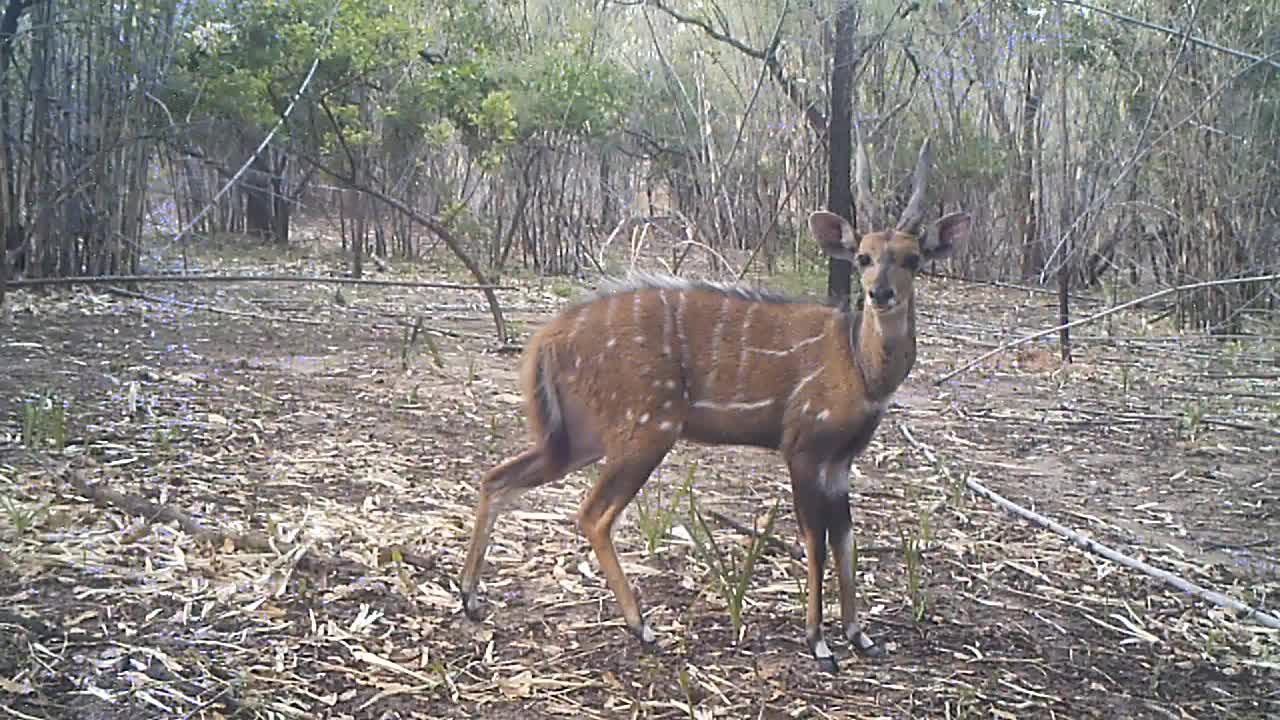
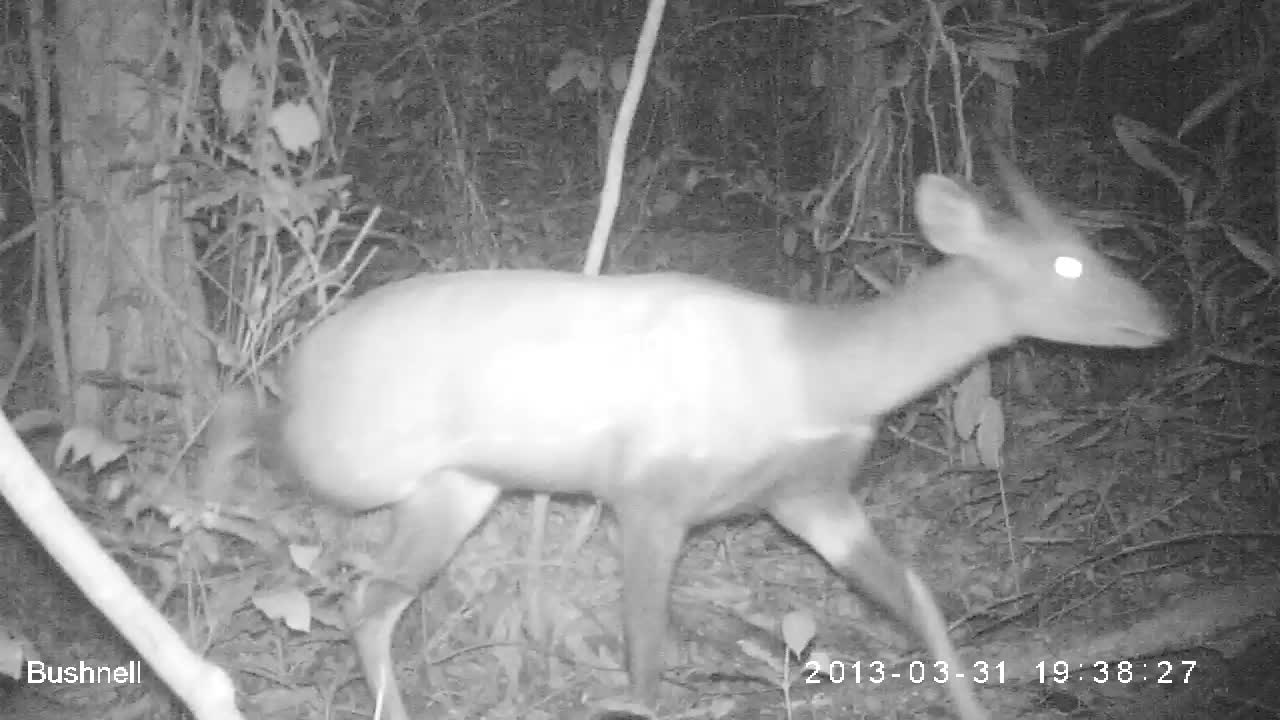
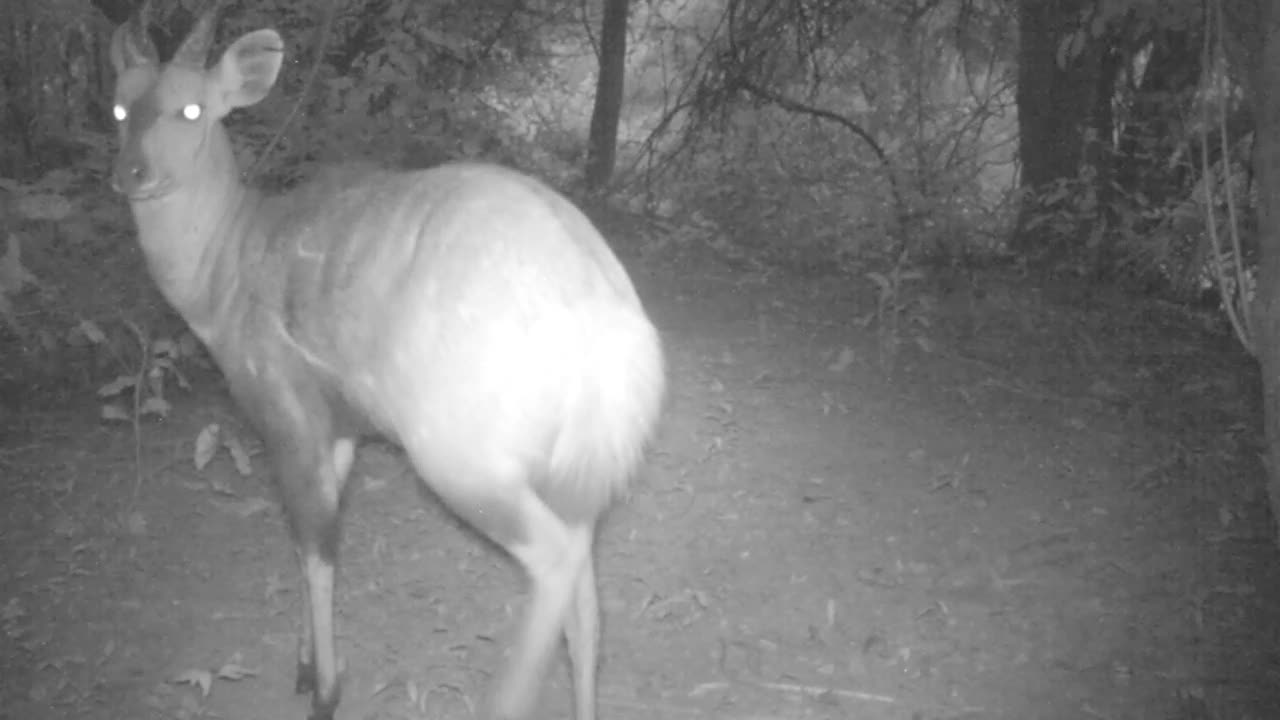
#bongo
Bongos are classified under large ungulate. They're not as widely distributed as bushbuck, but are still present at many C&S sites. Adults of both sexes have long thick horns. Bongos are a reddish-brown color that is similar to that of female bushbucks, but their vertical striping pattern is always present and males don't darken significantly with age. In black and white videos, the flank markings may be hard to see, but bongos are substantially heavier and more solidly built than bushbuck. They have leg markings similar to bushbuck, but the hair down their spine is usually longer and stands up more.
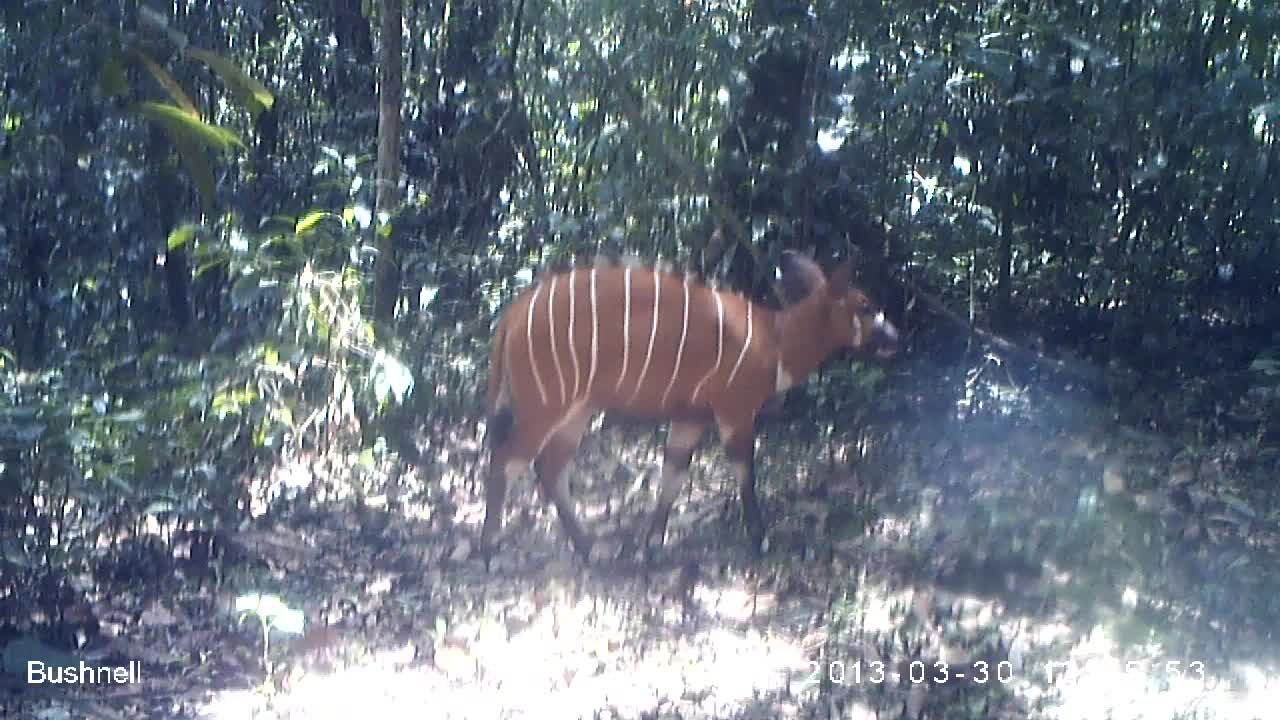
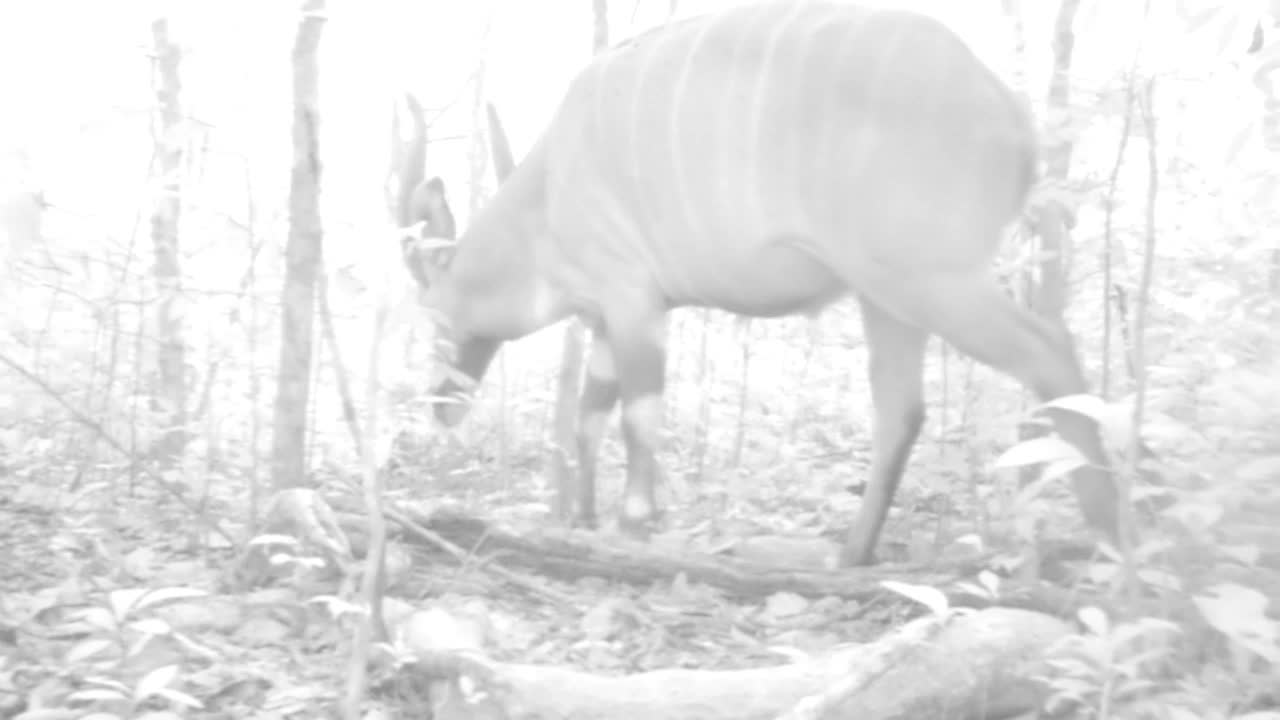
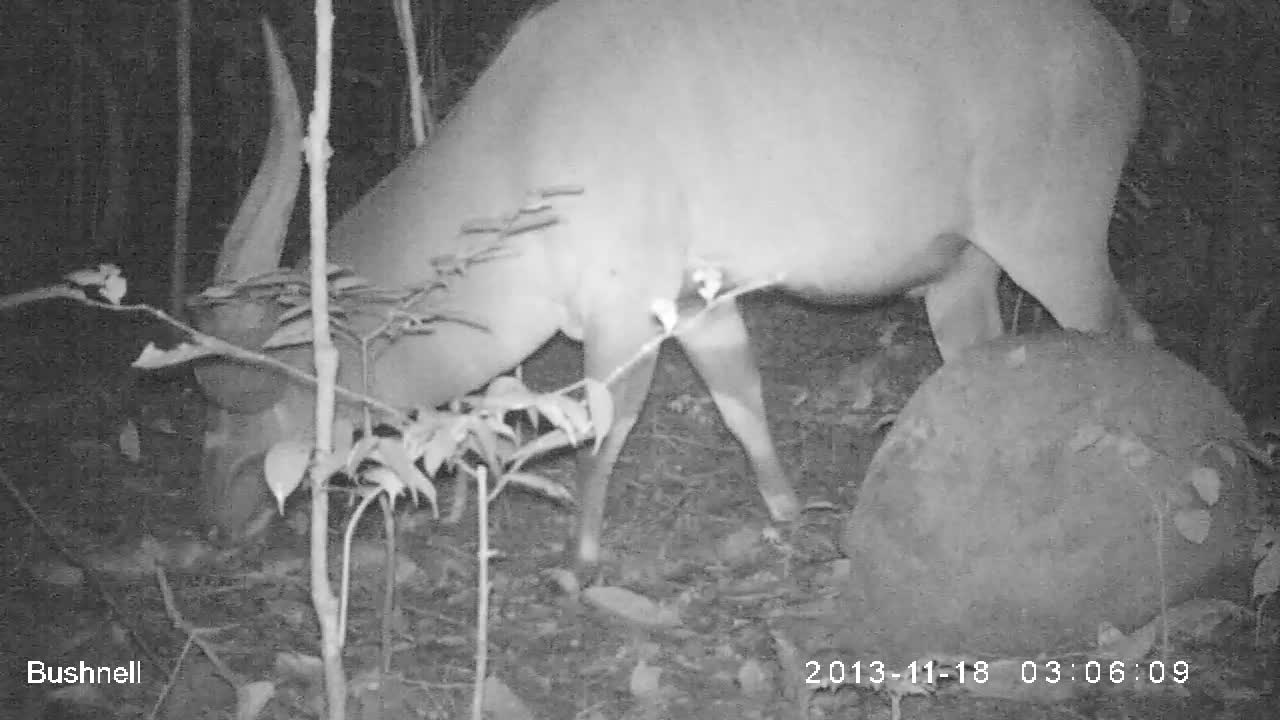
#sitatunga
Sitatungas are classified under large ungulate. They are restricted to swampy areas and have so far been quite rare on C&S. They look nearly identical to bushbuck, but are usually somewhat heavier and with shaggier fur. A notable difference is that sitatunga have long splayed hooves, but those are likely to be hard to see!
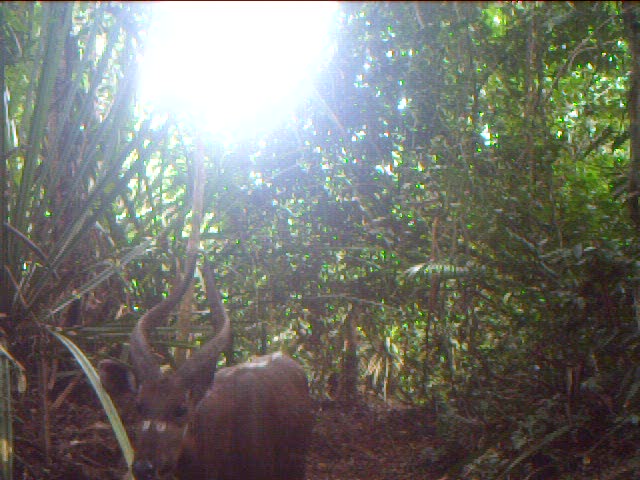
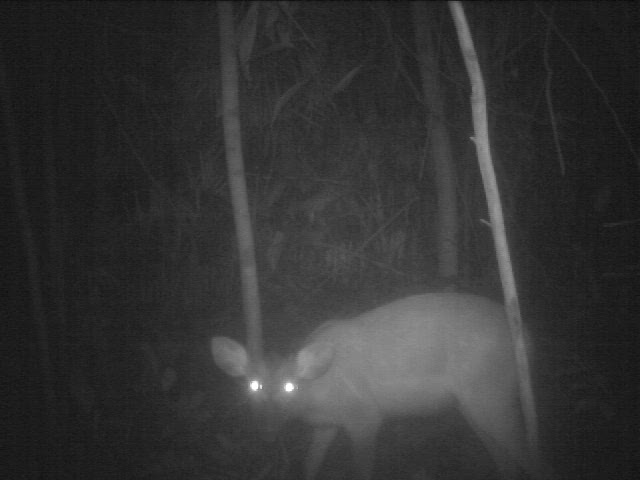
#roan_antelope
Also classified under large ungulate we have roan antelope. They look quite different from the other animals in this guide, with a more horse-like appearance and long skinny ears. The live in savanna habitats and so far have only been seen at one C&S site (Dry Lake). Adults of both sexes have horns that curve back and light brown fur on the body. The face is black and white and they have a short bristly mane of pale hair tipped with black that ends just past their shoulders.
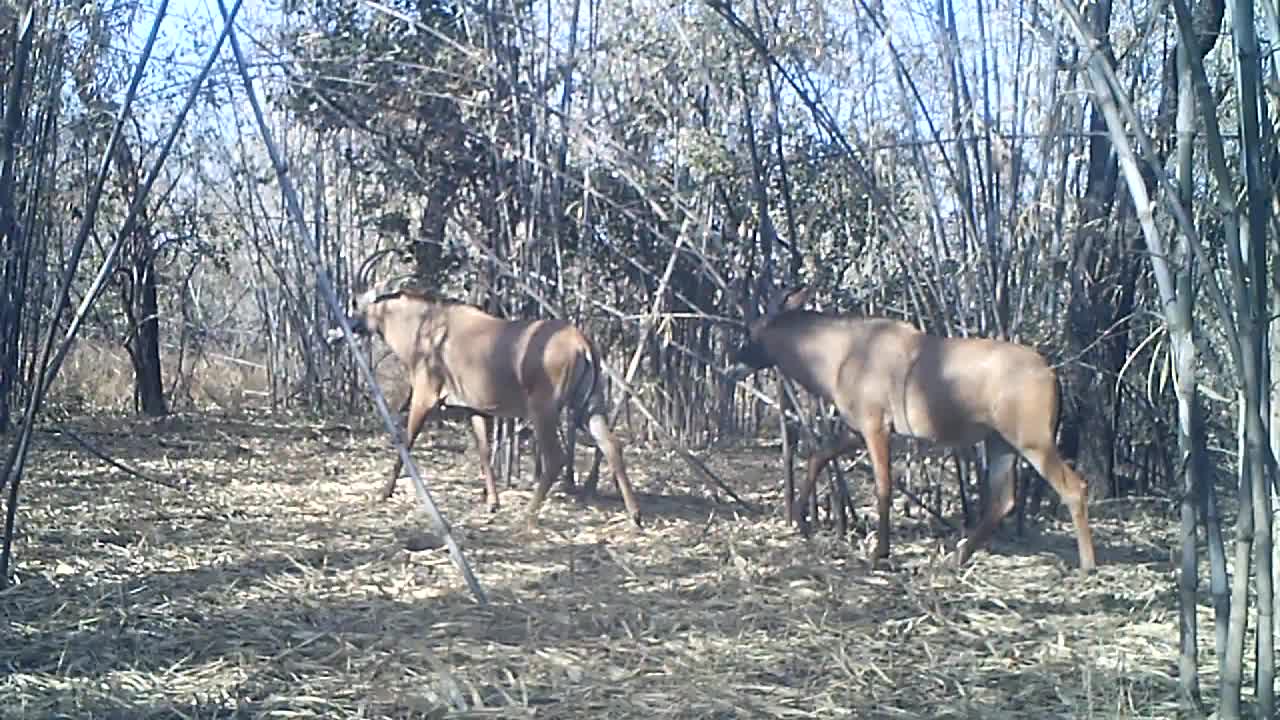
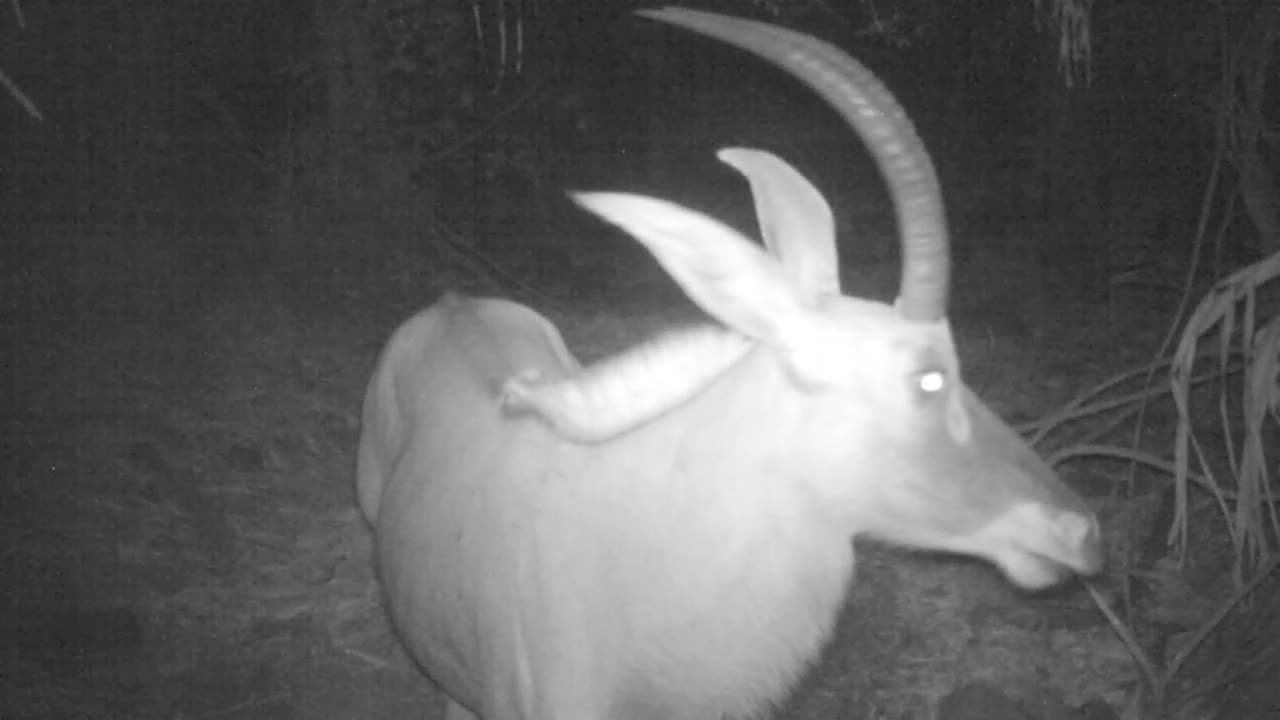
#water_chevrotain
Since water chevrotains are not antelopes, they are classified under large ungulate despite being fairly small. They are distributed across many C&S areas, but have so far been seen only rarely. The have a very rounded back and a small head, with both spots and stripes on the flanks. Neither males nor females have horns, and they are nocturnal.
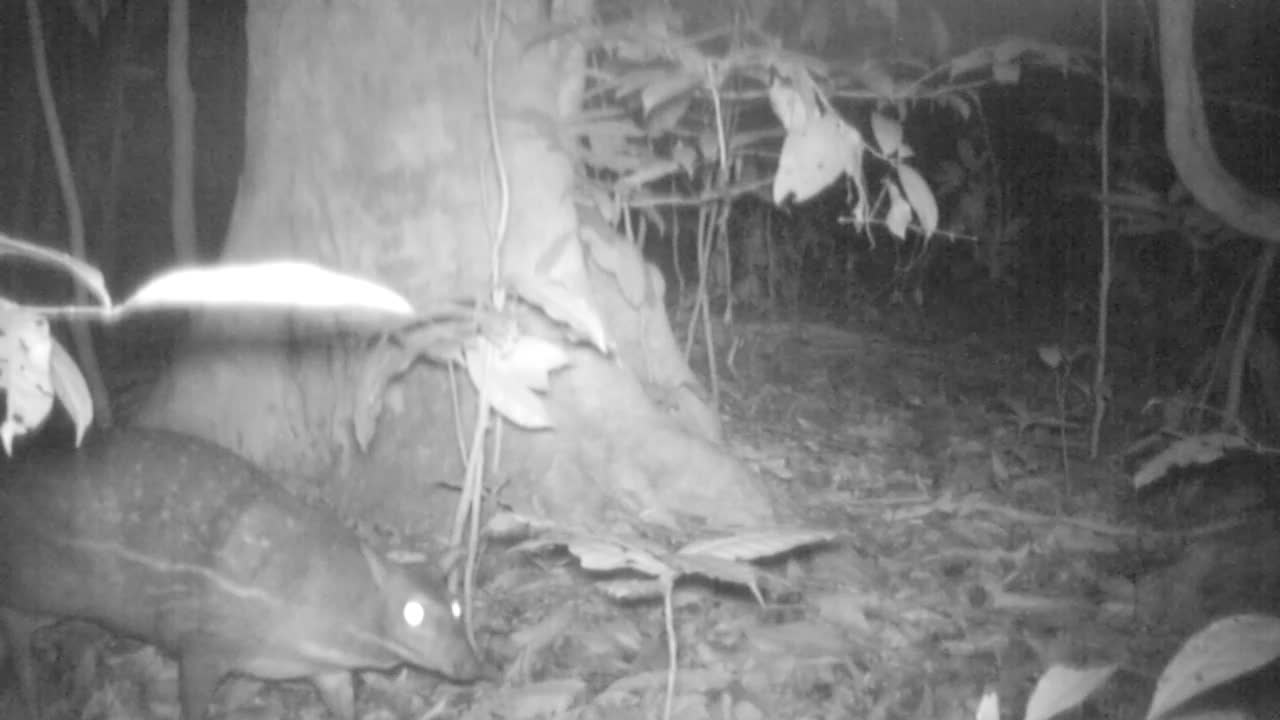
#royal_antelope
Another small rare animal is the royal antelope, classified under small antelope. Their distribution is limited to west Africa, though similar species may be found in central and east Africa. Royal antelope look similar to small grey duiker, but are even smaller, have shorter faces, and do not have white-fringed tails that flap constantly.
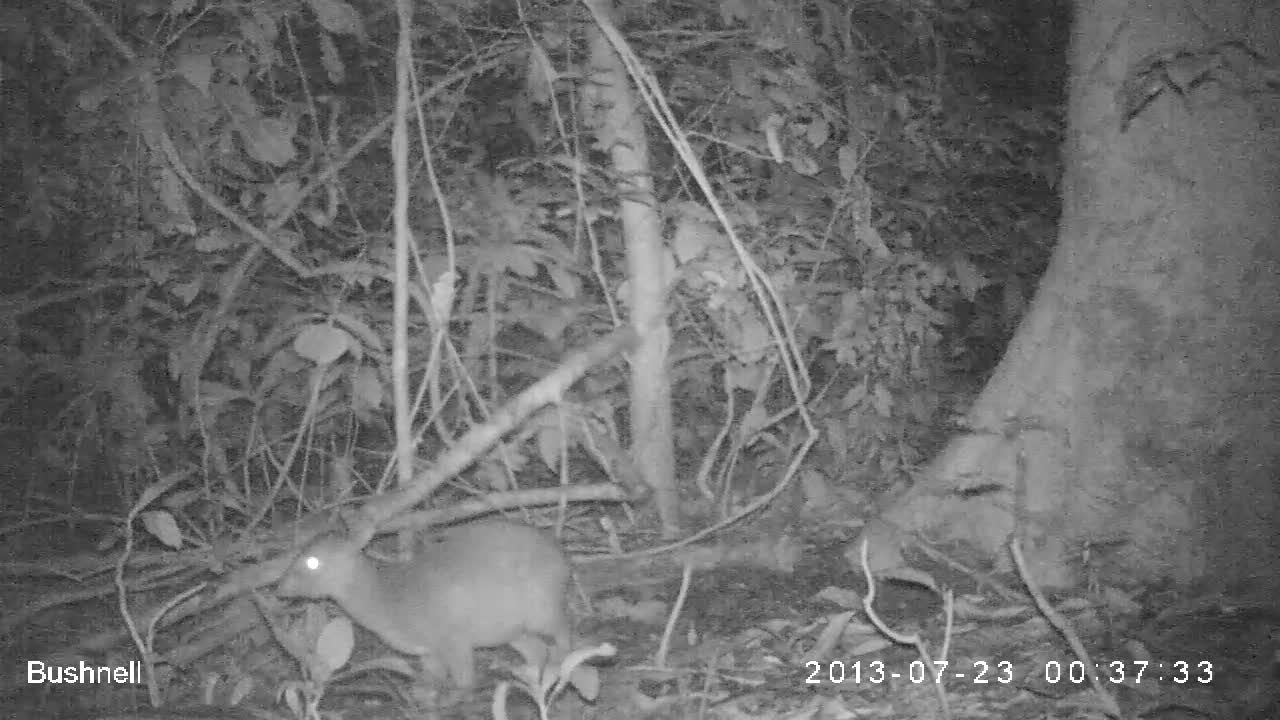
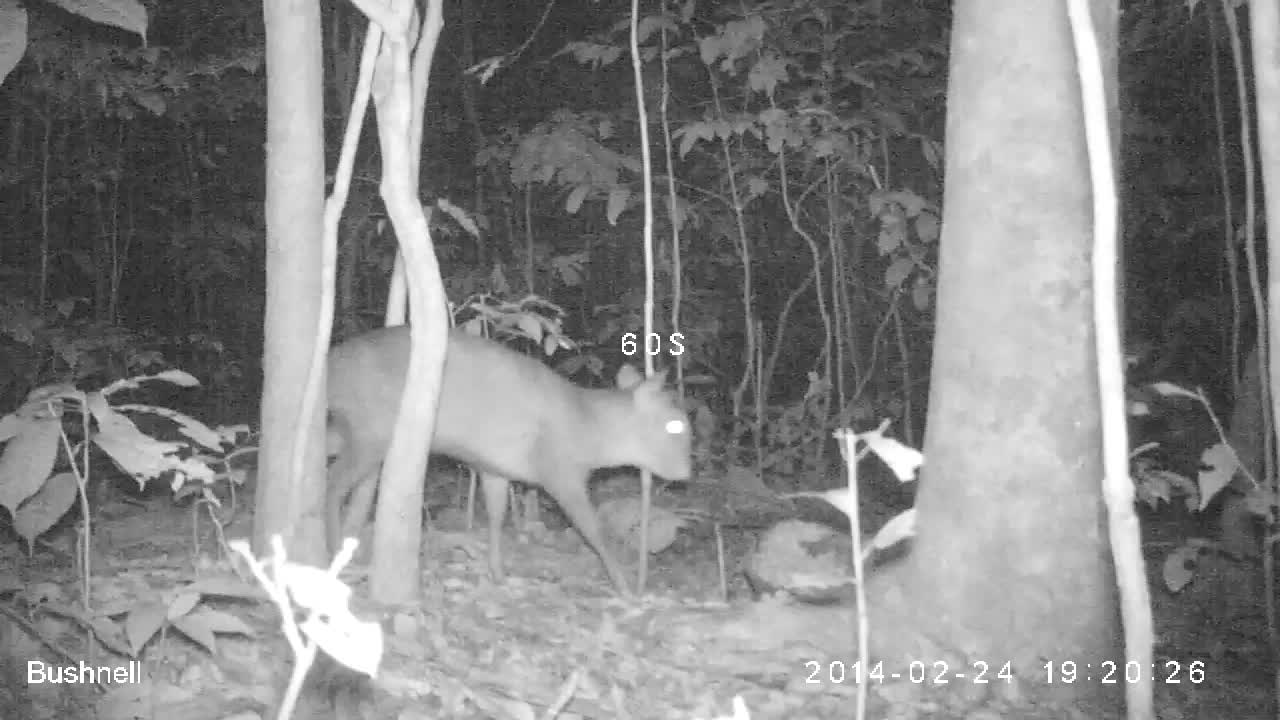
#forest_buffalo
Forest buffalo have their own classification category. They can be found across many C&S areas, though they have been fairly rare on camera trap footage. They are nearly always seen at night and are very solidly built. Adults of both sexes have somewhat short C-shaped horns that point back. Coloration is dark with an even darker line down the spine and darker lower legs. Ears have fringes.
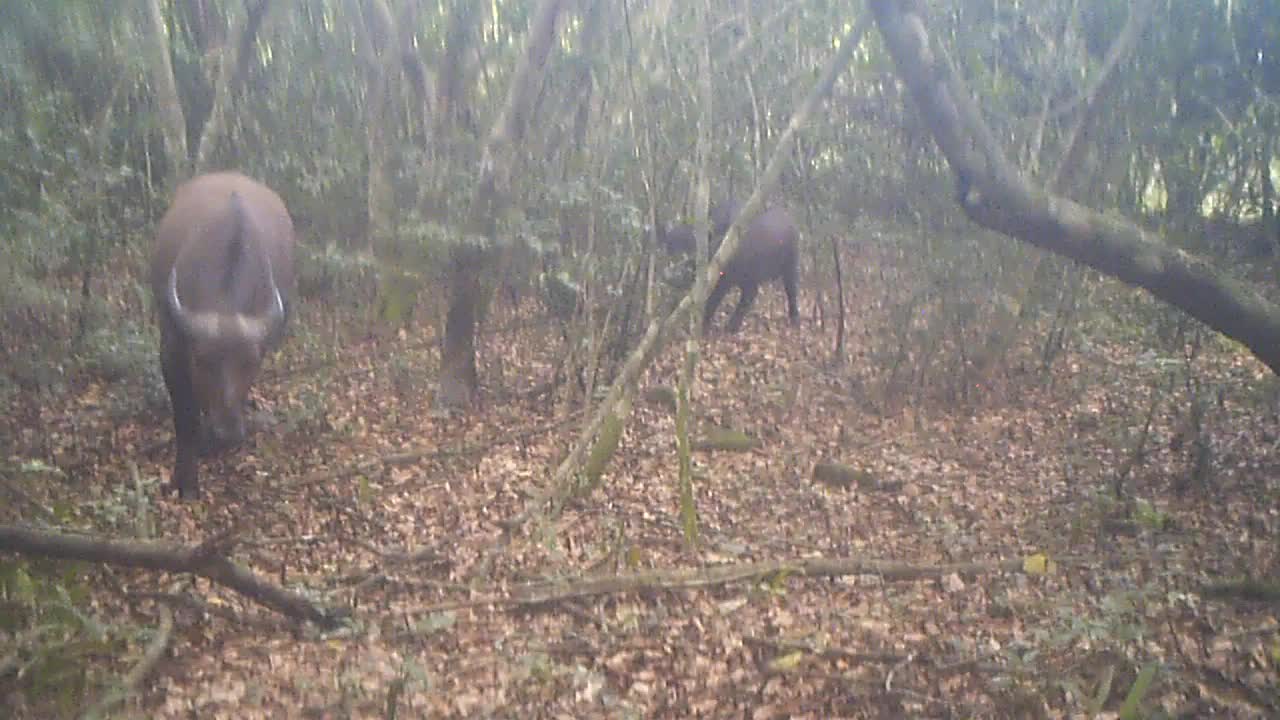
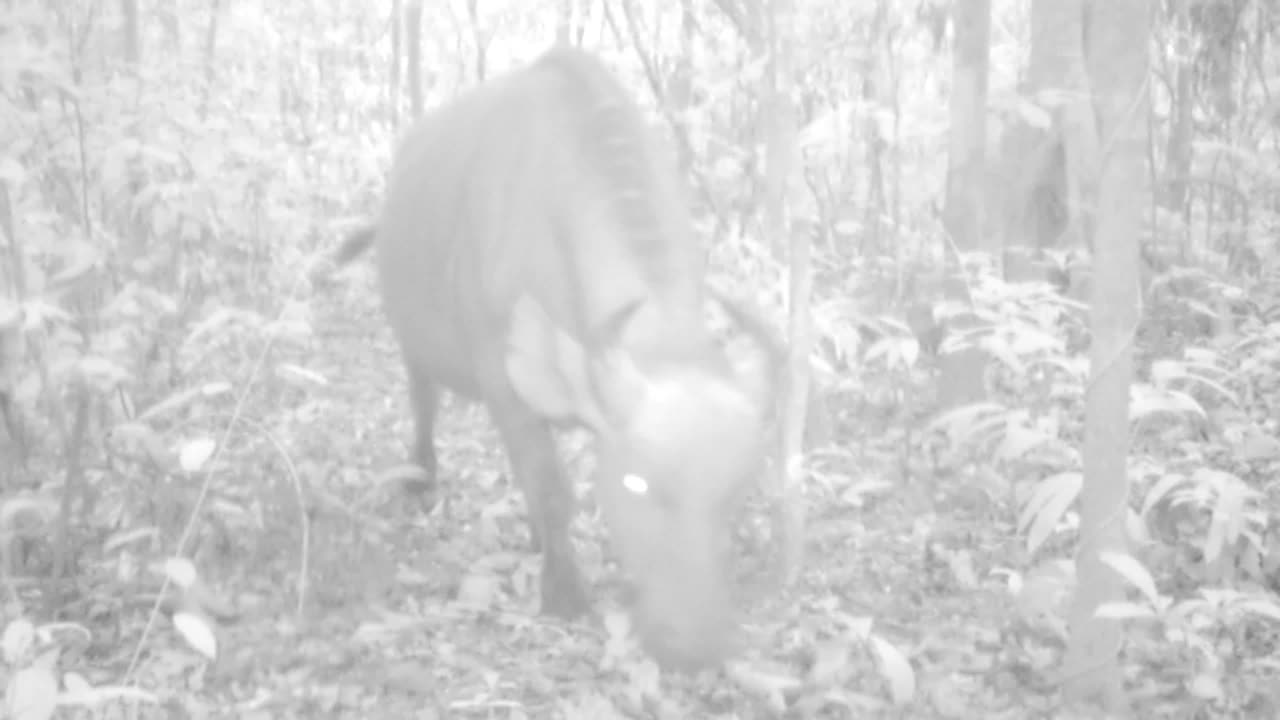
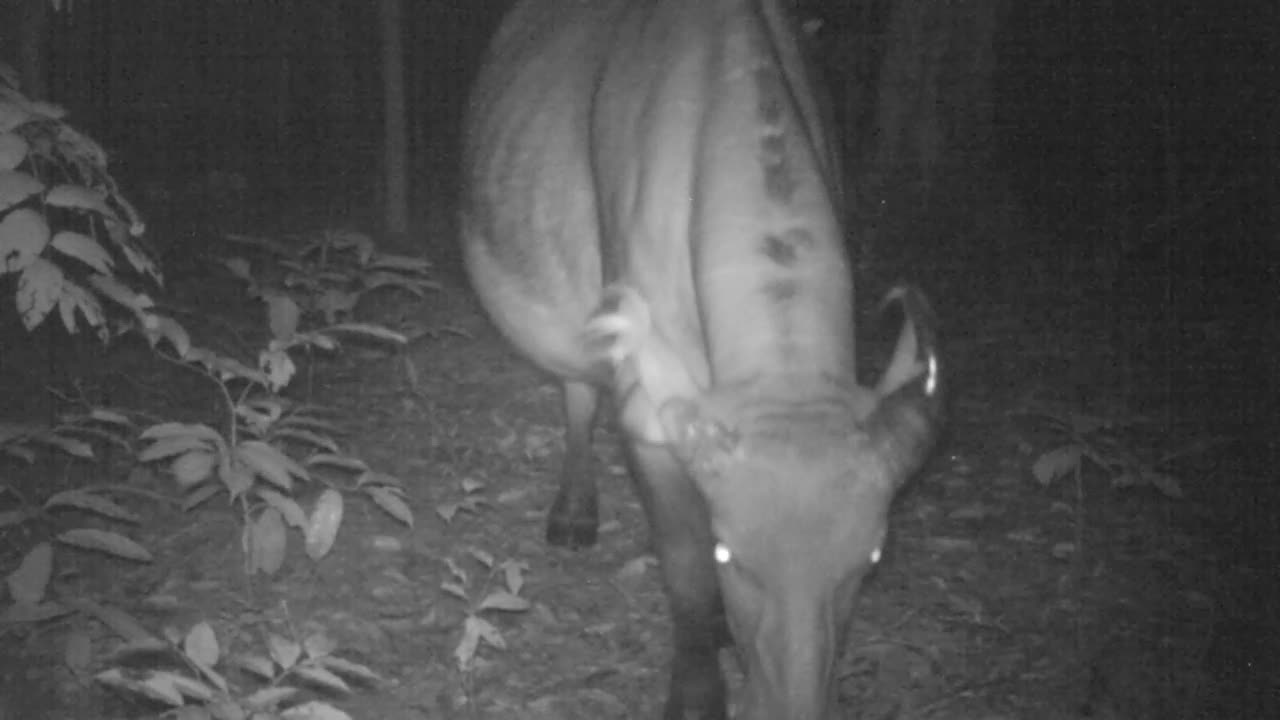
#cattle #domesticanimals
Cattle also have their own classification category. They are domestic animals and will only been seen in areas where humans graze their animals. So far they have only been seen at one C&S site (Dry Lake). They are almost always seen during the day, are often in large groups, and come in a variety of colors, though usually paler.
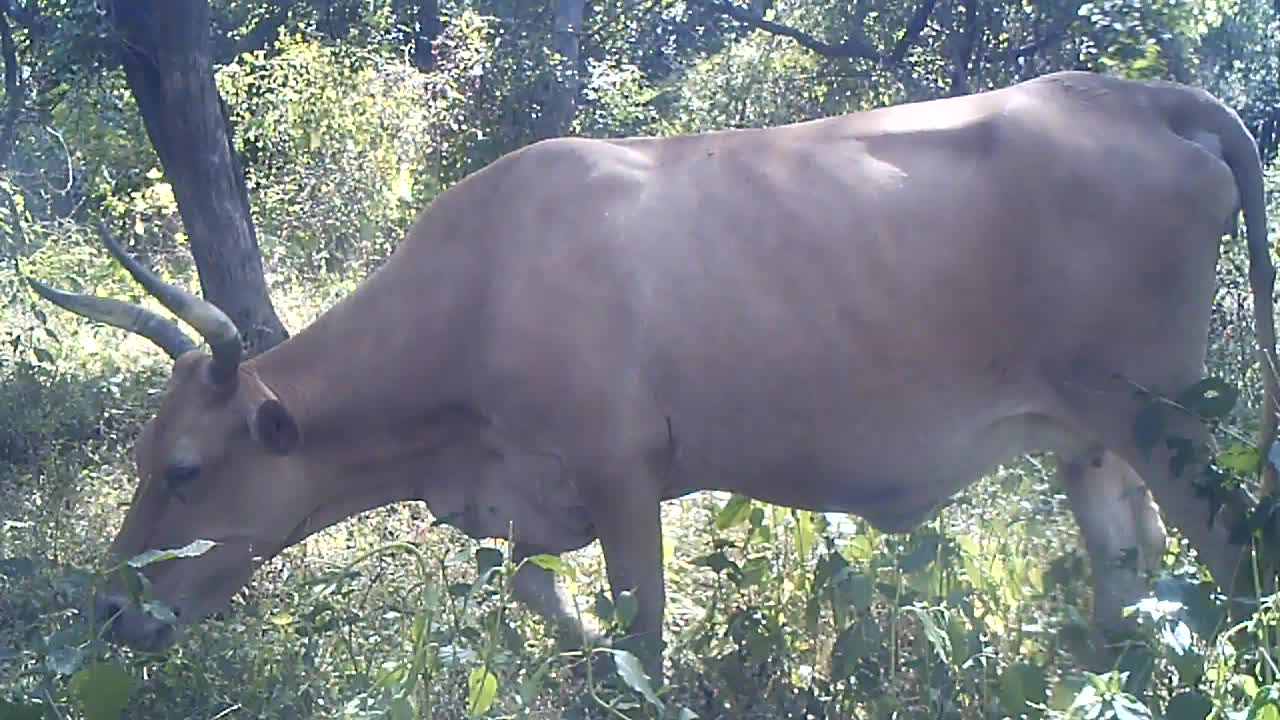
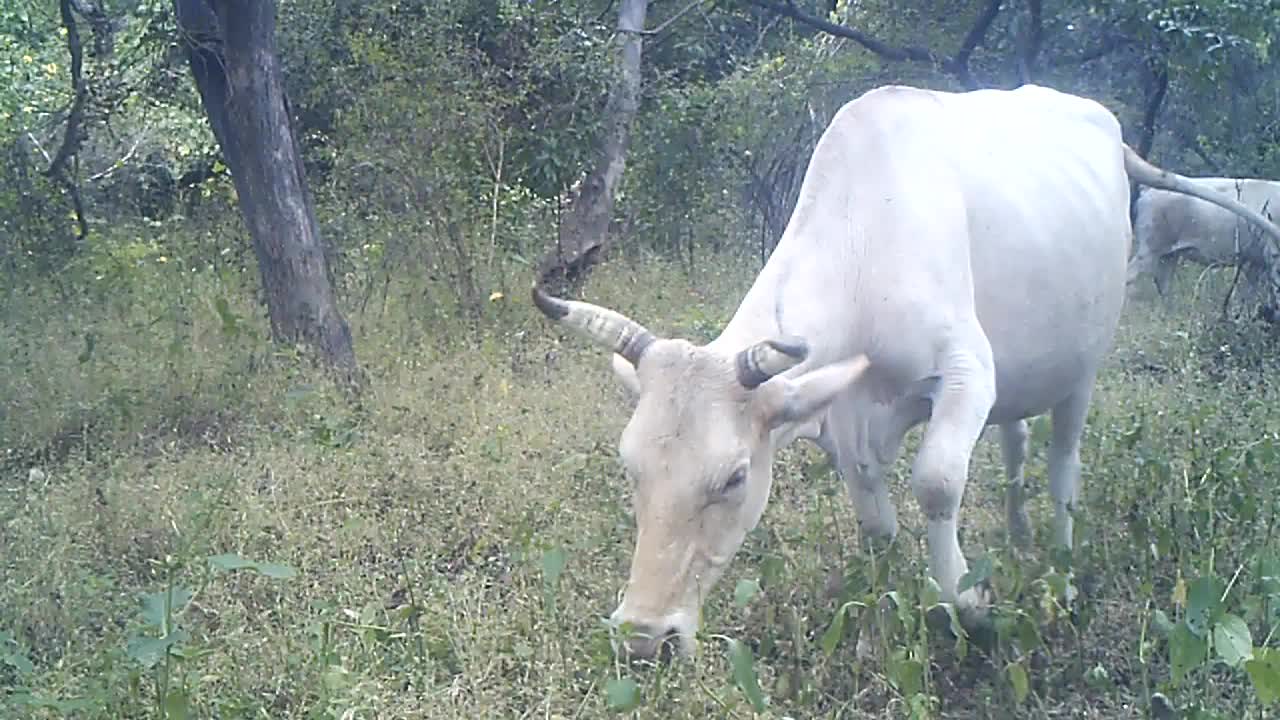
If you're ever unsure or have any questions, feel free to comment or make a forum post!
Posted